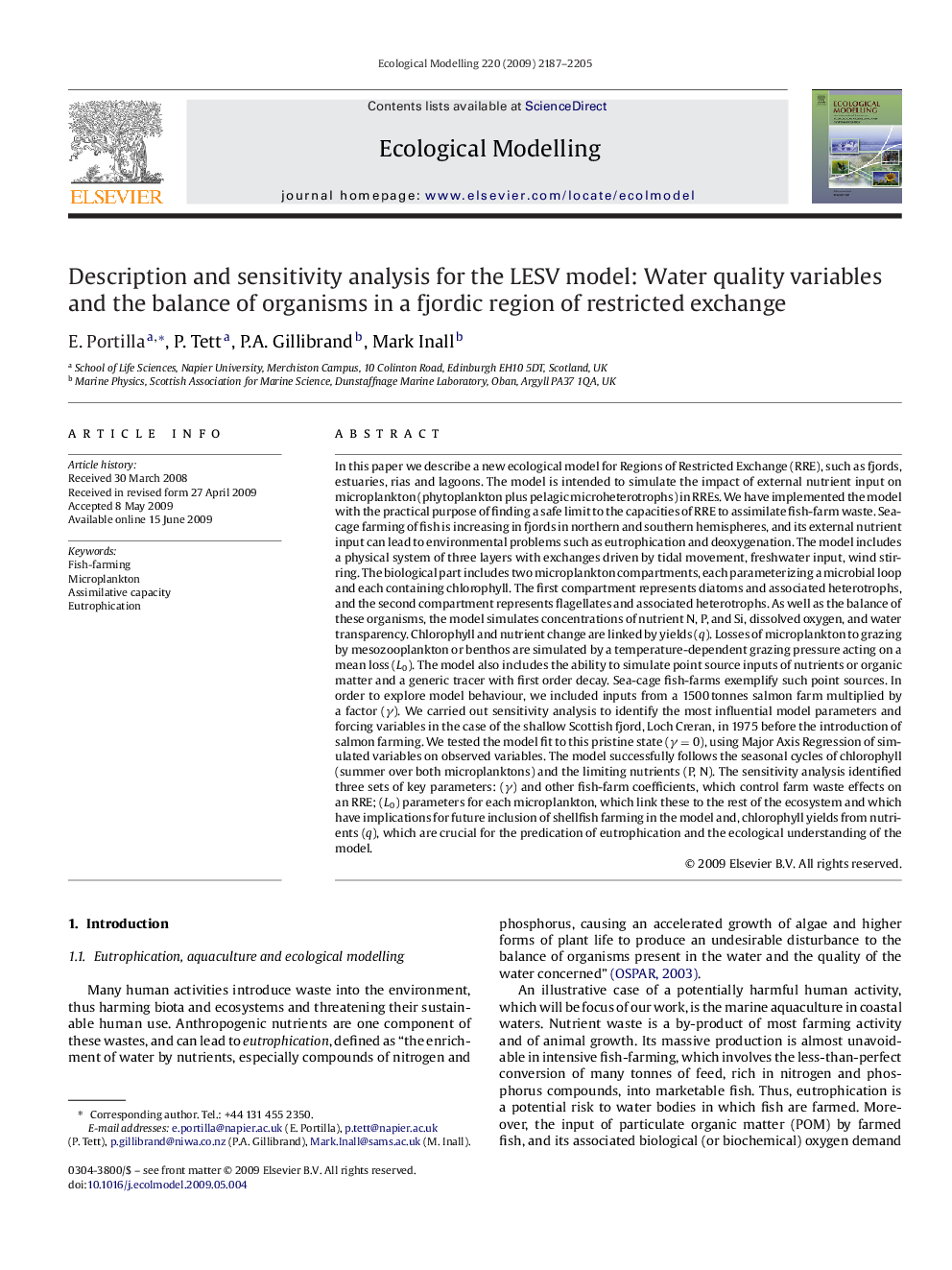| کد مقاله | کد نشریه | سال انتشار | مقاله انگلیسی | نسخه تمام متن |
|---|---|---|---|---|
| 4377717 | 1303442 | 2009 | 19 صفحه PDF | دانلود رایگان |
عنوان انگلیسی مقاله ISI
Description and sensitivity analysis for the LESV model: Water quality variables and the balance of organisms in a fjordic region of restricted exchange
دانلود مقاله + سفارش ترجمه
دانلود مقاله ISI انگلیسی
رایگان برای ایرانیان
کلمات کلیدی
موضوعات مرتبط
علوم زیستی و بیوفناوری
علوم کشاورزی و بیولوژیک
بوم شناسی، تکامل، رفتار و سامانه شناسی
پیش نمایش صفحه اول مقاله

چکیده انگلیسی
In this paper we describe a new ecological model for Regions of Restricted Exchange (RRE), such as fjords, estuaries, rias and lagoons. The model is intended to simulate the impact of external nutrient input on microplankton (phytoplankton plus pelagic microheterotrophs) in RREs. We have implemented the model with the practical purpose of finding a safe limit to the capacities of RRE to assimilate fish-farm waste. Sea-cage farming of fish is increasing in fjords in northern and southern hemispheres, and its external nutrient input can lead to environmental problems such as eutrophication and deoxygenation. The model includes a physical system of three layers with exchanges driven by tidal movement, freshwater input, wind stirring. The biological part includes two microplankton compartments, each parameterizing a microbial loop and each containing chlorophyll. The first compartment represents diatoms and associated heterotrophs, and the second compartment represents flagellates and associated heterotrophs. As well as the balance of these organisms, the model simulates concentrations of nutrient N, P, and Si, dissolved oxygen, and water transparency. Chlorophyll and nutrient change are linked by yields (q). Losses of microplankton to grazing by mesozooplankton or benthos are simulated by a temperature-dependent grazing pressure acting on a mean loss (L0). The model also includes the ability to simulate point source inputs of nutrients or organic matter and a generic tracer with first order decay. Sea-cage fish-farms exemplify such point sources. In order to explore model behaviour, we included inputs from a 1500 tonnes salmon farm multiplied by a factor (γ). We carried out sensitivity analysis to identify the most influential model parameters and forcing variables in the case of the shallow Scottish fjord, Loch Creran, in 1975 before the introduction of salmon farming. We tested the model fit to this pristine state (γ=0), using Major Axis Regression of simulated variables on observed variables. The model successfully follows the seasonal cycles of chlorophyll (summer over both microplanktons) and the limiting nutrients (P, N). The sensitivity analysis identified three sets of key parameters: (γ) and other fish-farm coefficients, which control farm waste effects on an RRE; (L0) parameters for each microplankton, which link these to the rest of the ecosystem and which have implications for future inclusion of shellfish farming in the model and, chlorophyll yields from nutrients (q), which are crucial for the predication of eutrophication and the ecological understanding of the model.
ناشر
Database: Elsevier - ScienceDirect (ساینس دایرکت)
Journal: Ecological Modelling - Volume 220, Issue 18, 24 September 2009, Pages 2187-2205
Journal: Ecological Modelling - Volume 220, Issue 18, 24 September 2009, Pages 2187-2205
نویسندگان
E. Portilla, P. Tett, P.A. Gillibrand, Mark Inall,